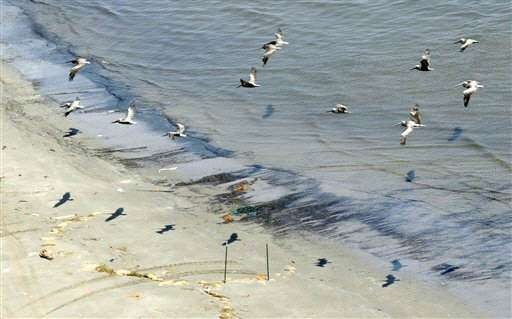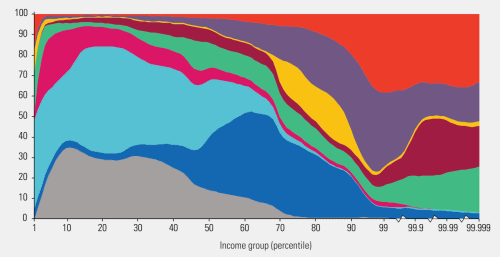Oil hits Louisiana’s largest seabird nesting area
Wildlife Toll Mounts In Gulf As Oil Hits Louisiana’s Largest Seabird Nesting Ground 
(AP) Biologists say oil has smeared at least 300-400 pelicans and hundreds of terns in the largest seabird nesting area along the Louisiana coast – marking a sharp and sudden escalation in wildlife harmed by BP’s Gulf of Mexico oil spill. The finding underscores that official tallies of birds impacted by the spill could be significantly underestimating the scope of damage. The government counts only oiled birds collected for rehabilitation or found dead, for use as evidence in the spill investigation. Oiled birds in the many nesting areas that dot the Gulf coast typically are left in place and not counted in official tallies. Researchers from the Cornell Lab of Ornithology said Wednesday that they had spotted the oiled pelicans on Raccoon Island over the past several days. The spit of land lines the Gulf outside the state’s coastal marshes. An estimated 10,000 birds nest on the island in Terrebonne Parish. U.S. Fish and Wildlife Service biologist Lisa Williams said state and federal observers had documented only 68 oiled pelicans on Raccoon Island. Biologist Marc Dantzker with Cornell – considered one of the nation’s premier institutions for bird research – said about 30 to 40 of the pelicans spotted by his group were oiled “head-to-tail.” Many more had visible blotches of oil. Dead birds also were seen, although no count was available for those. “This is a major oiling event of an incredibly important seabird colony,” Dantzker said. “Many of these birds will be dead soon – weeks and months. These blotches are deadly.” Even a small amount of oil can kill birds because it hampers their ability to regulate their body temperature. The Raccoon Island colony was established by the state in the 1980s. Its successful expansion epitomized restoration efforts that brought brown pelicans off the endangered species list last year. Oil from the spill 50 miles off the coast hit the island on July 10, after Hurricane Alex drove high seas into the region as it passed to the south, according to Louisiana officials. And with millions of gallons of crude still at sea it could be hit again. “This is not like Exxon Valdez where you had tens of thousands of birds killed all at once,” said Ken Rosenberg, director of conservation science at the Cornell laboratory. “It’s more insidious because it is literally happening in waves and it’s happening over and over again as the birds are moving around.” …
